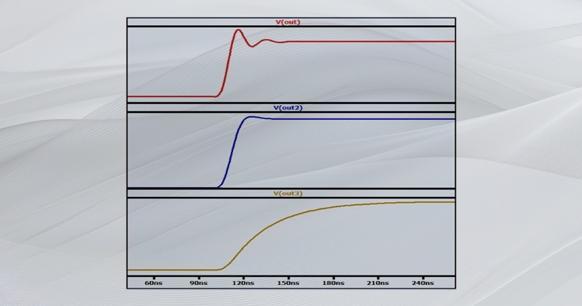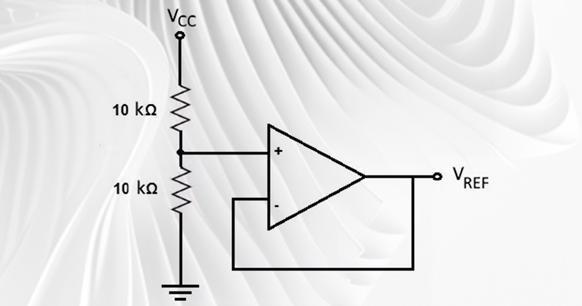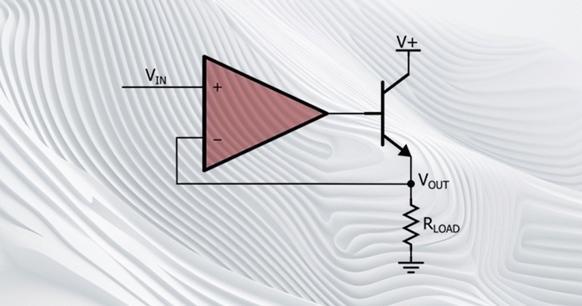
Comprehensive Guide to Operational Amplifier Voltage Followers: Functions, Stability, and Applications
This video will examine the voltage follower, an illustrative example of an operational amplifier circuit that is both straightforward and highly functional.
The operational amplifier is a highly versatile and user-friendly component that has been incorporated into an extensive range of circuits and applications. One reason for the op-amp's popularity is its ability to combine simplicity and performance. Op-amp circuits are a valuable addition to many types of systems, yet they are not difficult to design and often require very few external components.
This video will examine the voltage follower, which is an illustrative example of an op-amp circuit that is straightforward yet highly functional.
The Op-Amp Voltage Follower
The most basic form of the voltage follower, also known as a unity-gain buffer, is illustrated in the diagram below.

As you can see, the only necessary component is the operational amplifier itself. However, it should be noted that a decoupling capacitor is required for the integrated circuit's power supply.
A voltage follower is a circuit that produces an output signal of equal amplitude to the input signal. The input signal is applied to the noninverting input terminal, which ensures that no inversion takes place. In summary, the voltage follower is a non-inverting buffer.
The unity-gain operation of the voltage follower is achieved through the use of negative feedback. The input signal is applied to the noninverting input terminal of the operational amplifier (op-amp), and the output terminal is connected directly to the inverting input terminal.
If the operational amplifier were operating as an open-loop amplifier (that is, without negative feedback), a minor increase in the input voltage would result in a significant increase in the output voltage, due to the amplifier's high gain.
The negative feedback connection creates a compensating effect, whereby the increased output voltage is returned to the negative portion of the differential input stage, resulting in a decrease in the output voltage. The net result of negative feedback in the voltage follower is that the output voltage is brought to a state of equilibrium with the voltage at the noninverting input terminal.
When the input signal exhibits slow variations relative to the operational amplifier's dynamic performance, this settling action is not readily apparent. The output signal is identical to the input signal. However, the settling action is evident when a rapid transition is applied to the voltage follower.
The plot below illustrates three examples of this settling behavior.

Reasons for Using a Voltage Follower
There are several reasons why a voltage follower may be a useful component in a circuit.
One of the key benefits of a voltage follower is that it does not affect the amplitude of the input signal. Additionally, it does not filter out high-frequency noise. You may be wondering why a circuit like this is so useful. It is accurate to state that a voltage follower does not intentionally alter the amplitude or frequency characteristics of the input signal. However, it does allow us to improve impedance relationships.
It is essential to consider the output impedance of the source subcircuit and the input impedance of the load subcircuit whenever a voltage signal is transmitted from one subcircuit to another.
The source's output impedance and the load's input impedance form a voltage divider, and consequently, voltage transfer depends on the ratio of input impedance to output impedance. To ensure effective voltage transfer, it is essential to have a source circuit with low output impedance and a load circuit with high input impedance.
A voltage follower has low output impedance and extremely high input impedance, making it an effective solution to problematic impedance relationships. In instances where a high-output-impedance subcircuit must transfer a signal to a low-input-impedance subcircuit, a voltage follower placed between the two subcircuits will ensure that the full voltage is delivered to the load.
One example of a simple yet crucial voltage-follower application is illustrated in the circuit below.

A reference voltage can be generated using a resistive voltage divider, but the resulting circuit's output impedance will not be low, particularly if higher-value resistors are used to reduce current consumption. The voltage follower is not affected by the divider's output impedance, and it produces a low-output-impedance reference voltage for other components in the system.
Voltage Follower Stability
As a general rule, you can rely on a voltage follower to perform the function implied by its name: to create an output signal that follows the input signal. However, it is important to be aware of one significant potential issue that could affect the functionality of the circuit. The issue here is stability. As with other types of op-amp circuits, the voltage follower is susceptible to oscillation.
It is important to note that oscillation in negative-feedback amplifiers is related to a phase shift that causes negative feedback to become positive feedback. It is a common misconception that a voltage follower would not have stability problems because the circuit has no overall amplification. In fact, voltage followers are more susceptible to oscillation than circuits with higher gain.
In the majority of instances, the most effective method for preventing oscillation in a voltage follower is to select an operational amplifier that is classified as "unity-gain stable." These op-amps are internally compensated to provide a frequency response that ensures stable operation when used in a voltage-follower configuration.
A High-Current Voltage Follower
The voltage follower's low output impedance makes it an effective circuit for driving current into a low-impedance load. However, it is important to note that most op-amps are not designed to deliver large output currents.
The configuration shown in the diagram below can be used to create a high-current version of the voltage follower.

Summary
l A voltage follower is a unity-gain, noninverting buffer that requires only an operational amplifier (and a decoupling capacitor).
l Voltage followers have high input impedance and low output impedance, which is essential for their buffering action. They strengthen a signal, allowing a high-impedance source to drive a low-impedance load.
l To ensure stable operation, an op-amp used in a voltage-follower configuration must be specified as "unity-gain stable."
l To create a high-current unity-gain driver, an external transistor can be incorporated into the voltage-follower configuration.




